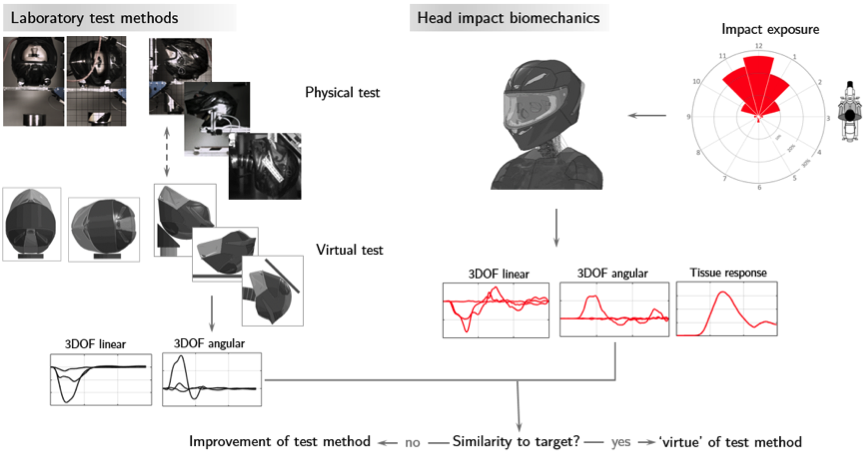Laboratory test methods for reproducing head impact biomechanics
WHO reported in 2015 that the half of the world’s road traffic death involve vulnerable road users, of which 46% are users of Powered Two Wheelers (PTWs).

Helmets are a vital piece of equipment for protection. Current standards in Europe and US, such as UN ECE reg. 22-05, DOT FMVSS 218 and Snell M2015, test motorcycle helmets by dropping a headform onto a flat or shaped anvil. This resembles a velocity perpendicular to the impact surface resulting in a normal reaction force only. However, head impacts in common motorcycle accidents have both normal and tangential force that lead to translational and rotational head motion. The goal of this project is to strengthen the scientific basis of motorcycling helmet test methods to evaluate helmet protection effectiveness under realistic impact situations. In order to reach this goal, two separate yet intertwined research questions shall be answered. First, it is to establish an understanding of head impact biomechanics in common motorcycle accident situations using finite element human body model. Second, it is to seek a simple and robust laboratory method that can faithfully reproduce the realistic head impact biomechanics. To this end, the new laboratory test method will serve as an evaluation of helmet effectiveness against injuries and eventually to promote new helmet designs that reduce the severity of injuries.
